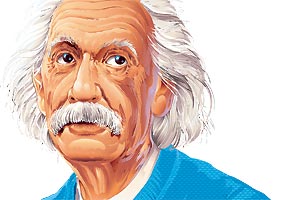The human being, in his relationship with the environment, is faced with the action of different physical agents that might, at some moment, cause injuries like contusions, bruises and wounds for example. The ones that affect bones are: sprains, luxations and fractures. The most serious are these last two.
The partial or total break of one or more bones is called fracture and may occur because of a fall, blow, accident or repeated effort (what is known as stress fracture)
The symptoms to recognize a fracture are: limb or joint visibly out of place or deformed; limited mobility or inability to move the affected area; swelling, bruising or bleeding; intense pain, rupture of the skin in case the bone tears it.
The immobilization method doctors use is generally to put on a plaster cast or other devices to maintain the fracture in the correct position while the bone merges again.
However, it must be made clear that the bone will heal itself and this begins when the body forms a protective blood clot and new spongy tissue at the injured area.
Types of fracture
– Depending on the degree of osseous involvement: complete, in which the bone is totally fractured and incomplete, when there is still a partial continuity of the osseous tissue, this type of fracture is typical in children’s skeletons thanks to their high elasticity.
– Depending on the involvement of soft parts: it may be a closed fracture in which the bones remains under the skin and open or exposed, the focus of the fracture has a communication with the external environment through a wound, in the most dramatic cases, the bone projects outside the limit of the skin.
– Depending on the direction of the break: these may be transverse (horizontal break), oblique (angled break) spiral (rotary force) butterfly (a wedge shaped piece breaks) and comminuted (the bone breaks into several fragments).
Sprain
It is an injury in which the joint suffers a sharp twisting, making the joint junctions vulnerable, that is to say, the ligaments. These may suffer a distention (grade I sprain), partial tear (grade II) or complete tear (grade III).
Luxation
It is the total loss of contact of the osseous surfaces, also know as dislocation. Its main symptoms are intense pain, swelling and deformity of the affected area.
When the separation of the joint surfaces is total it is denominated complete luxation.
And when it is partially separated it receives the name of incomplete, partial or subluxation.
Reduction (maneuver of putting the bones back into place) must be urgent, because the joint rapidly suffers damage when remaining dislocated.








 Muere Albert Einstein
Muere Albert Einstein